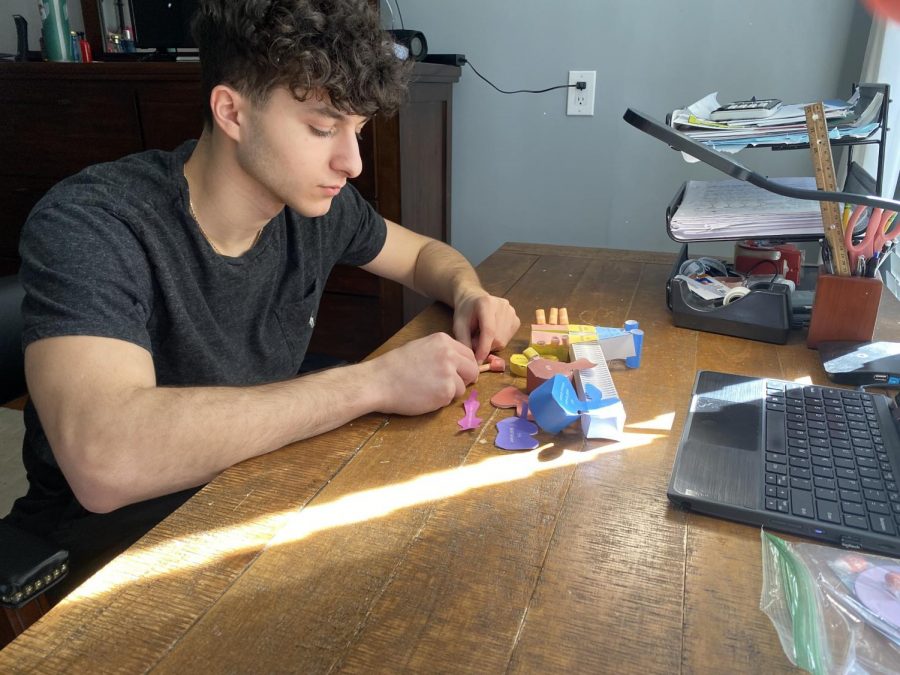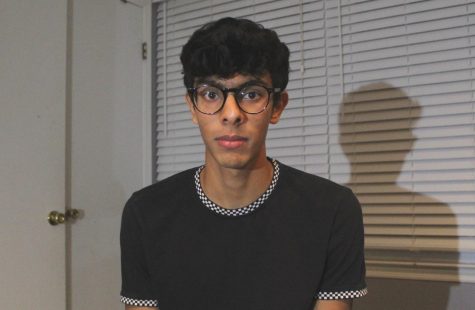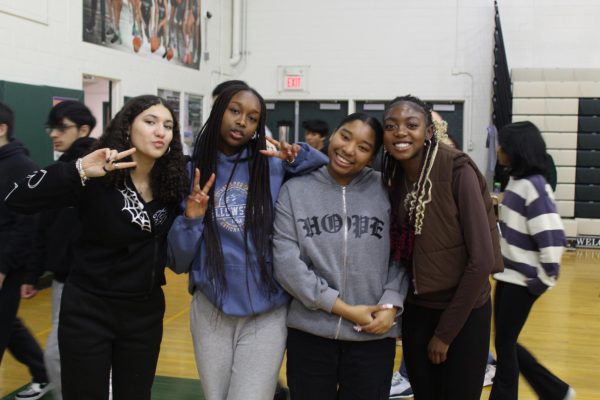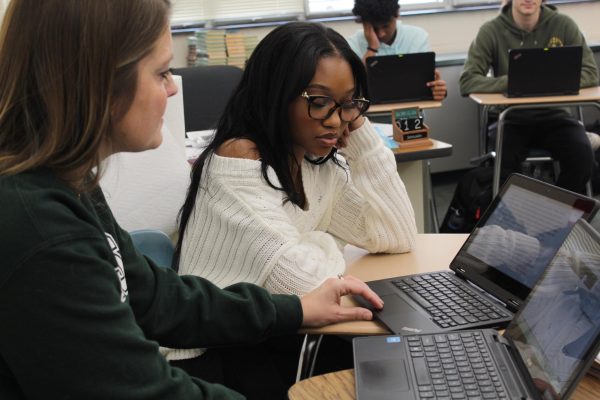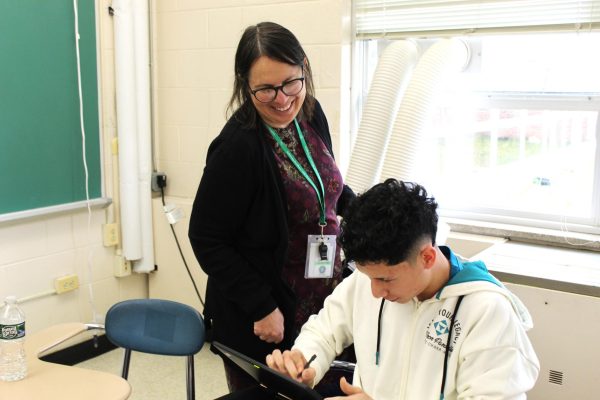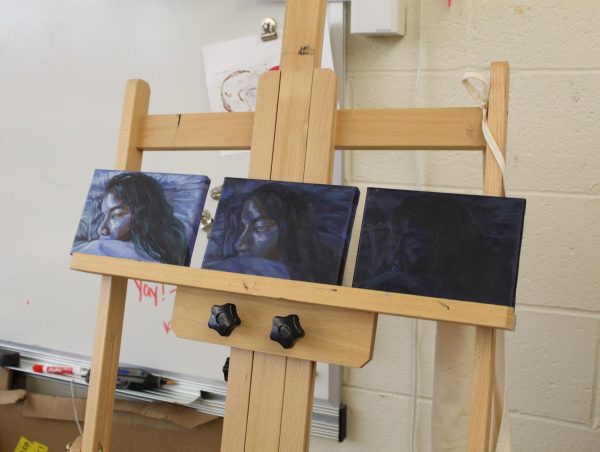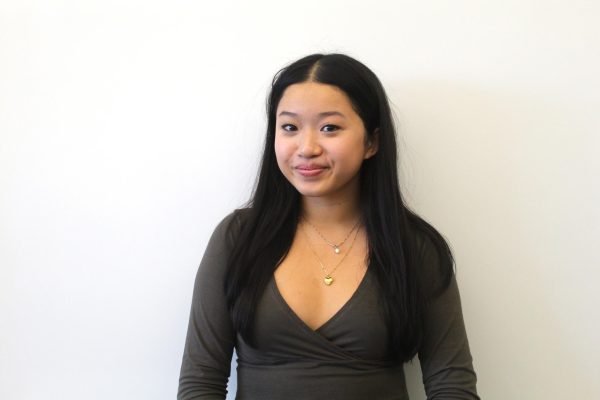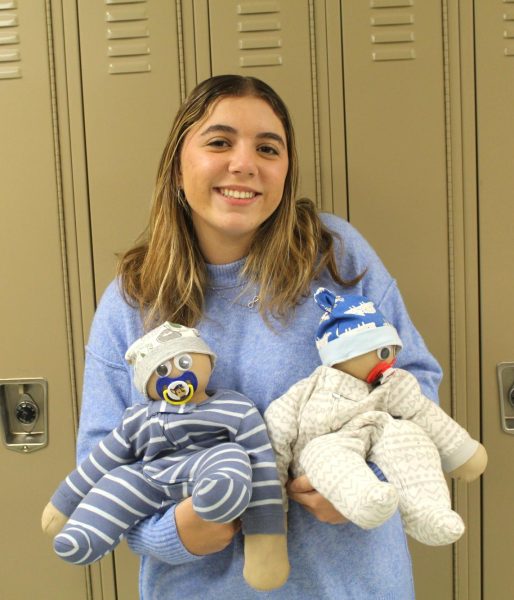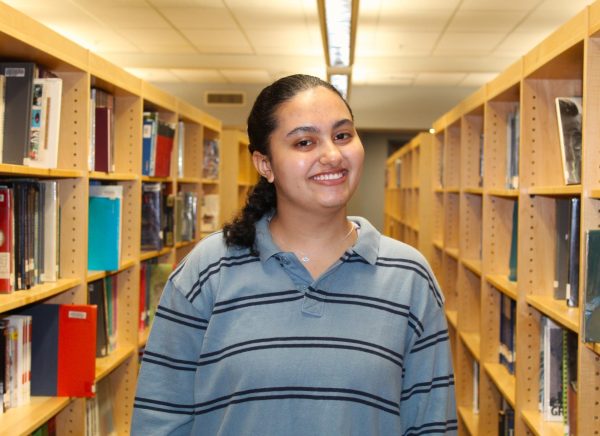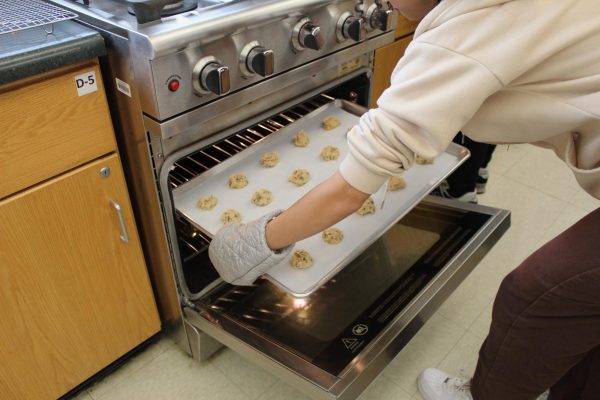DIY Labs in AP Biology with Ms. Sanelli
AP Bio is a little harder to teach without seeing your students face to face, but Ms. Sanelli makes it work.
February 2, 2021
After 35 years of teaching, Ms.Sanelli’s love for Biology continues to drive her to share all the vast knowledge about the subject. She teaches AP Biology, which is a combination of intense labs that last for two periods, lectures about all 8 units in the textbook, and eye opening discussions that the whole class jumps in on. However, due to the pandemic, it has been hard for Sanelli to teach such a class behind a computer. Even with the stress thrown on her back, one of EB’s veterans continues to give the same learning experience she has given in past years.
Q: WHAT’S YOUR FAVORITE PART ABOUT TEACHING BIOLOGY?
A: Molecular Biology. Everything biology is based on protein structure. So when you think about it, the whole approach to biology comes from proteins and molecular bio.
Q:DIFFERENCES BETWEEN THIS YEAR’S LABS AND LAST YEAR’S LABS?
A: For example, with the cell communication lab at school, we used to have the kids use markers and they’re able to erase it. Now they had to do it on their own and come as a group to combine and collaborate on it. But for other labs like Photosynthesis, how do you do those at home? Basically, I gave them data and explained how to do the lab. The thing that was supplementing it was labster, which is a website that gives simulations for the lab.
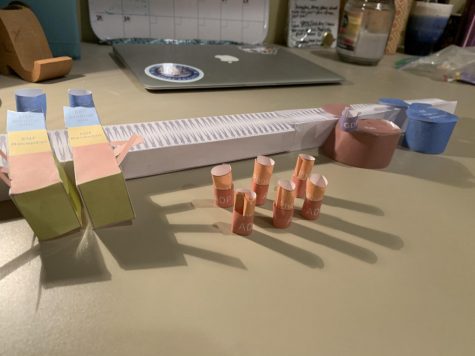
Q: WERE THERE ANY SEMESTER 1 LABS CUT THIS YEAR? ? WHY?
A: My molecular class, they haven’t done any labs. Same with Waxman. I usually let the molecular kids work on a DNA Strip that spreads out to 3 lab tables long. Its a DNA sequence of the Beta Hemoglobin Gene. I can’t send that home because I don’t have enough of them. We tried printing that out, what a fiasco. Me and the other teachers tried laying the cell strips out on white table cloth and they started to curl. Then, we tried to get it printed and tape it down. The teachers took out their phones and tried to film it, and they all said they got too dizzy doing it because there was so much moving. So in the end I had them create models and compare with their lab groups.
Q: HOW DO YOU THINK THE LACK OF LABS WILL AFFECT THE STUDENTS ON THEIR AP EXAMS AND UNDERSTANDING OF THE CLASS?
A: That part I can’t answer very well because that was a really scoffed test. Last year, colleges became frustrated because they didn’t feel like they should give credits for that test. But for this year, Collegeboard plans to change that. This is what I personally think. They will have the same test as before. We may not have the ability to do labs as of now but there are other schools out there that aren’t able to have the same learning experience but still score high. If the student is able to get the concept of what’s going on, they hopefully will be able to do it and all will be okay.
Labs make up almost 50% of AP Biology and the fact that the students are not in the classroom surely makes it hard. However because of all the hard work Ms. Sanelli is putting in with the combination of online materials, the students are still able to learn as if they were in school. As the AP Exam nears by, Ms. Sanelli and the other AP Biology teachers put their teaching into overdrive to ensure 5s from all their students.


